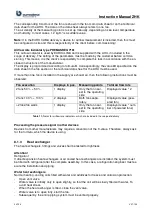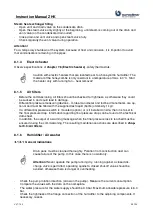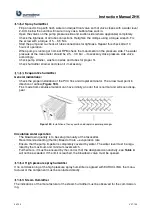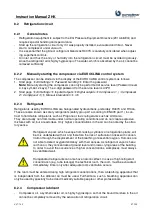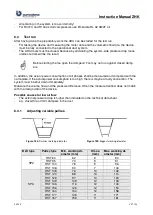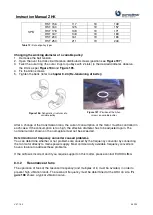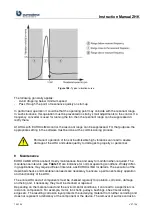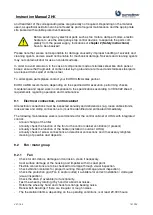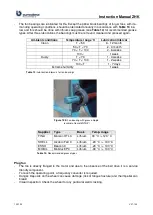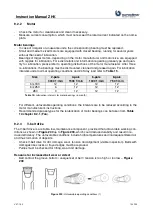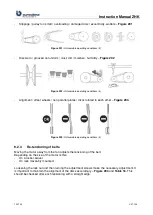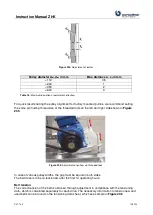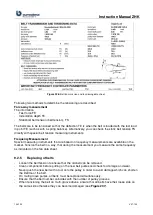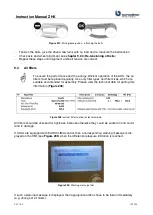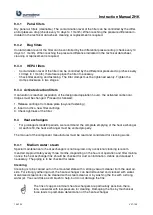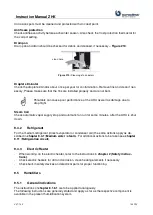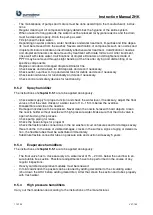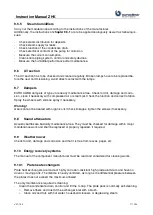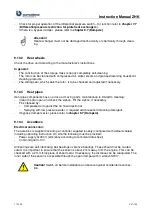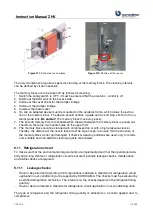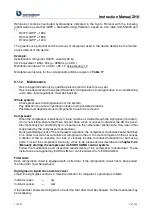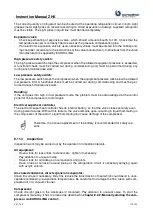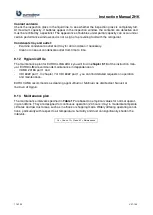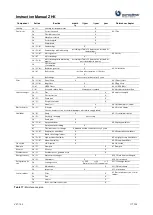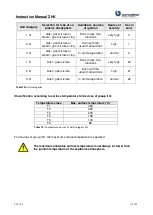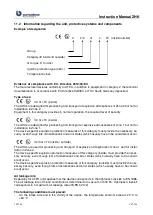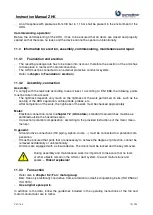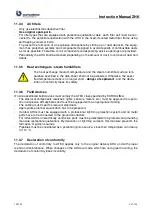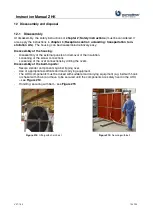
Instruction Manual ZHK
108/129
V07-19.0
9.3.1
Panel filters
Dry panel air filters (cleanable). The contamination level of the filter can be controlled by the differ-
ential pressure drop (check every 14 days to 1 month). When reaching the pressure difference in-
dicated in the technical data sheet, cleaning or replacement is required.
9.3.2
Bag filters
Contamination level of the filter can be controlled by the differential pressure drop (check every 14
days to 1 month). When reaching the pressure difference indicated in the technical data sheet,
cleaning or replacement is required.
9.3.3
HEPA filters
-
Contamination level of the filter can be controlled by the differential pressure drop (check every
14 days to 1 month), therefore replace the filter if necessary.
-
Check filter sealing and fastening. The filter clamps must be tightened evenly. Tighten the
clamps clockwise in two stages.
9.3.4 Activated carbon filters
If saturation is reached (expiration of the designated operation hours), the activated carbon car-
tridges must be changed. Proceed as followed:
1. Release cartridge from base plate (bayonet fastening).
2. Insert and fix a new filter cartridge.
3. Check tightness of the filter.
9.4
Heat exchangers
-
For prolonged standstill periods, we recommend the complete emptying of the heat exchanger.
-
At each refill, the heat exchanger must be vented properly.
The manual of the component manufacturer must be read and considered for cleaning works.
9.4.1
Medium water / steam
Special maintenance for heat exchangers is not required, only occasional cleaning is recom-
mended. Approximately every three months, depending on the hours of operation and filter mainte-
nance, the heat exchanger fins should be checked for dust contamination, debris and cleaned if
necessary. The piping is to be checked for leaks.
Cleaning
Cleaning is to be carried out on the mounted state with a strong vacuum cleaner from the dust air-
side. For strongly adhering dust, the heat exchanger can be dismounted and cleaned with water.
Galvanized steel coils can be cleaned with a steam cleaner or by washing the fins with a strong
water jet. You could take a soft brush to help, but do not damage the fins.
The fins of copper-aluminum heat exchangers are particularly sensitive, there-
fore, use water with low-pressure for cleaning. Damaging the fins by mechanical
force leads to premature deterioration of the heat exchanger.
Summary of Contents for ZHK Series
Page 1: ...ZHK INSTRUCTION MANUAL ...

